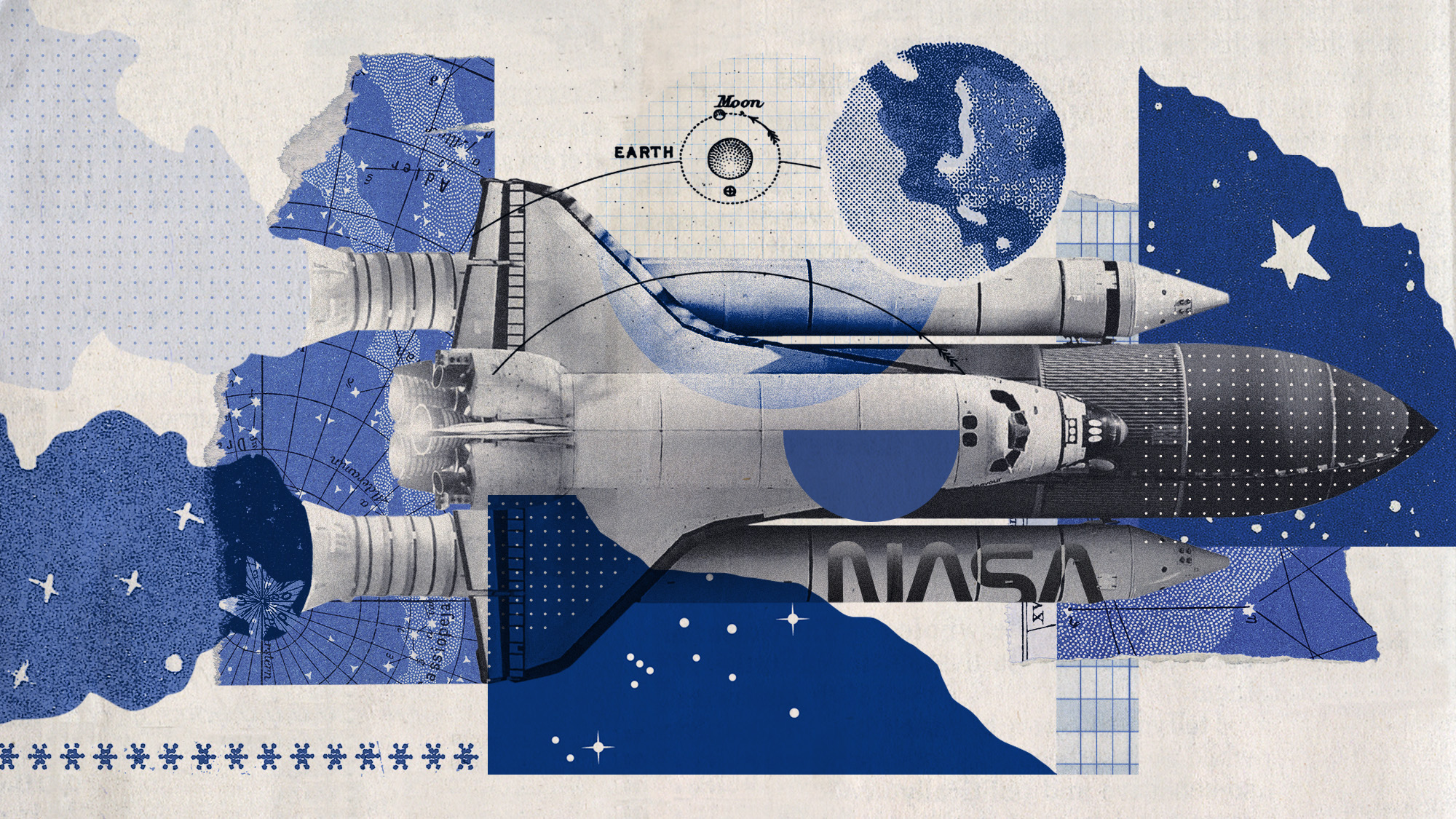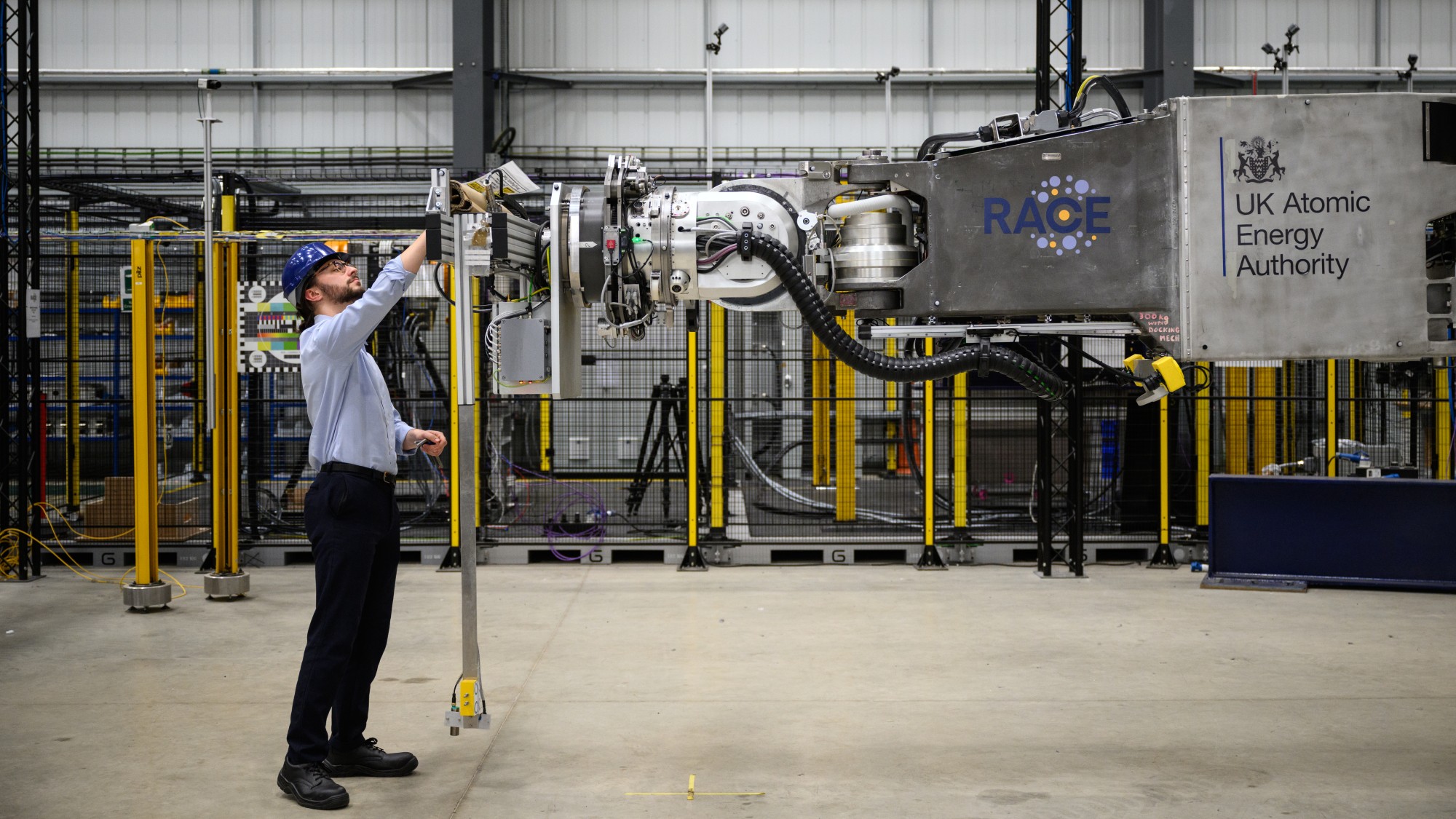What is NASA working on?
A running list of the space agency's pioneering developments


NASA is constantly working on new projects that expand our horizons in space and on Earth. From putting men back on the moon to revolutionizing air travel, there is a lot in the works. Below, we take a look at some of the excitement surrounding the space agency.
Artemis mission
Perhaps the mission with the most publicity, NASA's Artemis mission aims to put people back on the moon and "establish the first long-term presence."
The mission is ongoing and takes place in phases. Artemis I took place in November 2022 and tested the safety of NASA's Space Launch System rocket using mannequins in preparation for phase II. Artemis II is expected to occur no earlier than September 2025, Reuters said. The phase will last approximately 10 days when "four astronauts will fly around the moon to test NASA's foundational human deep space exploration capabilities … for the first time with crew." The next phase, Artemis III, "will mark humanity's first return to the lunar surface in more than 50 years," and "make history by sending the first humans to explore the region near the lunar South Pole." That is expected to take place no earlier than September 2026. In addition to exploring the moon, NASA hopes to mine the area by 2032. The agency is looking to develop resources on the moon including water, oxygen and eventually minerals like iron.
The Week
Escape your echo chamber. Get the facts behind the news, plus analysis from multiple perspectives.

Sign up for The Week's Free Newsletters
From our morning news briefing to a weekly Good News Newsletter, get the best of The Week delivered directly to your inbox.
From our morning news briefing to a weekly Good News Newsletter, get the best of The Week delivered directly to your inbox.
NASA has also been funding private companies to create lunar landers to be tested prior to humans making the attempt. The Peregrine launcher, created by the company Astrobotic Technology, was launched in January 2024, but did not make it to the moon because of a critical propellant loss. In February, the Odysseus launcher, created by the company Intuitive Machines, successfully landed on the moon "marking the first commercial spacecraft to soft-land on the moon, and the first U.S.-made vehicle to touch down on the lunar surface since the Apollo program ended more than five decades ago," said CNN.
On to Mars
NASA hopes to eventually use the outcomes of the Artemis mission to push humanity to Mars. The space agency is starting with a simulated mission known as the Crew Health and Performance Exploration Analog (CHAPEA), in which four people will live in a simulated Mars-like environment for a year to test the extent to which research can be done, as well as whether people could live and work there. There are four main complications that make traveling to Mars high risk: radiation, an eyeball swelling condition that occurs when people spend too much time in low-gravity situations, crew cooperation, and food and nutrition, CNN said. The first simulation began in June 2023, and the last one will take place in 2026.
NASA's Psyche mission, launched in October 2023 with the goal of reaching a distant asteroid, hit its first milestone by "successfully carrying out the most distant demonstration of laser communications," CNN said. This is through the Deep Space Optical Communications technology demonstration (DSOC) aboard the Psyche spacecraft. The DSOC was able to achieve "first light," successfully sending and receiving data. This is an initial step in deeper space study and can aid in further exploration and reaching Mars.
Tracking climate changes
NASA's work isn't limited to space — the agency does valuable work for Earth, as well, especially in regard to tracking climate change. NASA has an Earth-observing satellite with the ability to track carbon dioxide emissions and removal by country. Tracking carbon emissions was not the initial goal of the satellite, but it provided a unique opportunity. "NASA is focused on delivering Earth science data that addresses real-world climate challenges," said Karen St. Germain, the director of NASA's Earth Science Division. Another of NASA's satellites detected early signs of El Niño, the natural phenomenon sending global temperatures skyrocketing, as well as identified that coastlines are rapidly sinking.
A free daily email with the biggest news stories of the day – and the best features from TheWeek.com
NASA is also now tracking space weather, namely solar storms. The agency launched its new GOES-U satellite in June. "In addition to its critical role in terrestrial weather prediction, the GOES constellation of satellites helps forecasters predict space weather near Earth that can interfere with satellite electronics, GPS, and radio communications," NASA said. "This fleet of advanced satellites is strengthening resilience to our changing climate, and protecting humanity from weather hazards on Earth, and in space."
Sampling asteroids
Through the agency's OSIRIS-REx program, scientists have retrieved a sample from the asteroid Bennu. Researchers have only tested the black rocks and dust on the outside of the collection device, but there have already been interesting findings. "We have verified that Bennu is dominated by water-bearing clay minerals," Dante Lauretta, the principal investigator for NASA's OSIRIS-REx mission, said to NPR. "We're just beginning here, but we picked the right asteroid, and not only that, we brought back the right sample," Daniel Glavin, OSIRIS-REx sample analyst and senior scientist at NASA's Goddard Space Flight Center, said to CNN. "This stuff is an astrobiologist's dream."
NASA launched its Psyche mission in October 2023. The mission's goal is to travel to a "unique metal-rich asteroid with the same name, orbiting the Sun between Mars and Jupiter," the NASA website said. The asteroid is metal-heavy and may be a "partial core of a planetesimal, a building block of an early planet." The mission is expected to begin exploring the asteroid in 2029.
Finding minerals
Dragonfly mission
NASA has started using modified U-2 spy planes to hunt for "strategic minerals" in the desert, Space.com said. The planes are being used to "locate stores of minerals hidden in the American desert," that are "vital for electronics manufacturing, the US economy and, by extension, national security."
The project is called the Geological Earth Mapping Experiment (GEMx) and is in collaboration with the United States Geological Survey. "Undiscovered deposits of at least some of these critical and strategic minerals almost certainly exist in the United States, but modern geophysical data is needed to increase our knowledge of these resources," Dean Riley, a collaborator on the project, said in a statement.
NASA officially approved the $3.35 billion Dragonfly mission, a "revolutionary project to explore Saturn's largest moon with a quadcopter drone," Ars Technica said. The rotorcraft is set to arrive at Saturn'’s moon Titan in 2034. "Dragonfly is a spectacular science mission with broad community interest, and we are excited to take the next steps on this mission," Nicky Fox, the associate administrator of NASA's Science Mission Directorate Headquarters, said in a NASA statement. "Exploring Titan will push the boundaries of what we can do with rotorcraft outside of Earth."
The goal of the mission is to "fly to dozens of promising locations on the moon, looking for prebiotic chemical processes common on both Titan and the early Earth before life developed," the statement said. The rotorcraft will explore Titan for three years. The Dragonfly mission is also the first where NASA is flying a vehicle on another planetary body for science.
Scientific Balloon Program
NASA runs an annual fall balloon campaign where "eight balloon flights carrying scientific experiments and technology demonstrations are scheduled to launch from mid-August through mid-October" from New Mexico, said NASA. "The flights will support 16 missions, including investigations in the fields of astrophysics, heliophysics, and atmospheric research." The program aims to "provide high altitude scientific balloon platforms for scientific and technological investigations," said the program website.
The Scientific Balloon Program has existed for over 30 years and has been instrumental in scientific discoveries and growing knowledge about Earth and space. "Not only are we launching a large number of missions, but these flights set the foundation for follow-on missions from our long-duration launch facilities in Antarctica, New Zealand and Sweden," said Andrew Hamilton, the acting chief of NASA's Balloon Program Office.
Supersonic research
NASA's Quesst mission aims to "collect data that could make supersonic flight over land possible, dramatically reducing travel time in the United States or anywhere in the world," said NASA. The space agency is working on a supersonic X-59 experimental spacecraft that is "designed to fly faster than the speed of sound without creating the thunderous sonic boom that typically accompanies breaking the sound barrier," said Space.com. (The Week and Space.com are owned by Future plc.) "If aircraft can be designed to achieve this, domestic flight times could be reduced by half, aiding not only in commercial air travel but also disaster relief and medical transport, for instance."
The craft would make a soft "thump" rather than the loud boom, and the agency is actively testing how loud the thump will be. NASA officially began the tests in October 2024. "The success of these runs will be the start of the culmination of the last eight years of my career," Paul Dees, NASA's deputy propulsion lead for the X-59, said in a statement. "This isn't the end of the excitement but a small stepping stone to the beginning."
Devika Rao has worked as a staff writer at The Week since 2022, covering science, the environment, climate and business. She previously worked as a policy associate for a nonprofit organization advocating for environmental action from a business perspective.
-
 Why is Trump killing off clean energy?
Why is Trump killing off clean energy?Today's Big Question President halts offshore wind farm construction
-
 8 restaurants that are exactly what you need this winter
8 restaurants that are exactly what you need this winterThe Week Recommends Old standards and exciting newcomers alike
-
 ‘This is a structural weakening of elder protections’
‘This is a structural weakening of elder protections’Instant Opinion Opinion, comment and editorials of the day
-
 How climate change is affecting Christmas
How climate change is affecting ChristmasThe Explainer There may be a slim chance of future white Christmases
-
 5 recent breakthroughs in biology
5 recent breakthroughs in biologyIn depth From ancient bacteria, to modern cures, to future research
-
 Blue Origin launches Mars probes in NASA debut
Blue Origin launches Mars probes in NASA debutSpeed Read The New Glenn rocket is carrying small twin spacecraft toward Mars as part of NASA’s Escapade mission
-
 ‘The Big Crunch’: why science is divided over the future of the universe
‘The Big Crunch’: why science is divided over the future of the universeThe Explainer New study upends the prevailing theory about dark matter and says it is weakening
-
 Why scientists are attempting nuclear fusion
Why scientists are attempting nuclear fusionThe Explainer Harnessing the reaction that powers the stars could offer a potentially unlimited source of carbon-free energy, and the race is hotting up
-
 The moon is rusting
The moon is rustingUnder the radar The Earth is likely to blame
-
 Panspermia: the theory that life was sent to Earth by aliens
Panspermia: the theory that life was sent to Earth by aliensUnder The Radar New findings have resurfaced an old, controversial idea
-
 Africa could become the next frontier for space programs
Africa could become the next frontier for space programsThe Explainer China and the US are both working on space applications for Africa
